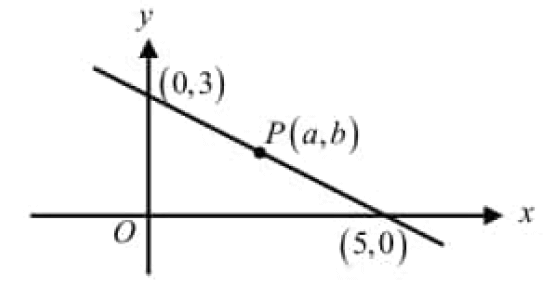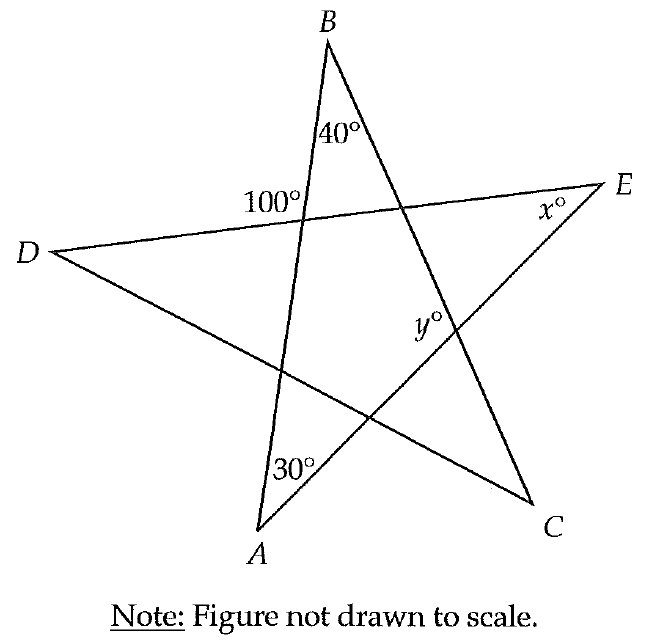PROBLEM SOLVING IN GEOMETRY WITH PROPORTIONS
Properties of Proportions
1. Cross Product Property :
The product of the extremes equals the product of the means.
If a/b = c/d, then ad = bc.
2. Reciprocal Property :
If two ratios are equal, then their reciprocals are also equal.
If a/b = c/d, then b/a = d/c.
3. Alternendo Property :
If a/b = c/d, then a/c = b/d.
4. Componendo Property :
If a/b = c/d, then (a + b)/b = (c + d)/d.
Using Properties of Proportions
Example 1 :
Say, whether the statement given below is true.
If x/4 = y/16, then x/y = 1/4.
Solution :
Given :
x/4 = y/16
Using Alternendo Property,
x/y = 4/16
Simplify.
x/y = 1/4
Hence, the statement is true.
Example 2 :
Say, whether the statement given below is true.
If p/3 = q/5, then (p + 3)/3 = (q + 3)/5
Solution :
Given :
p/3 = q/5
Using Componendo Property,
(p + 3)/3 = (q + 5)/5
Because (p + 3)/3 ≠ (q + 3)/5, the conclusions are equivalent.
Hence, the statement is false.
Example 3 :
In the diagram shown below,
PQ/QS = PR/RT
Find the length of QS.
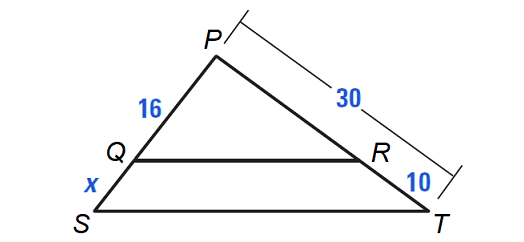
Solution :
Given :
PQ/QS = PR/RT
Substitute.
16/x = (30 - 10)/10
Simplify.
16/x = 20/10
16/x = 2/1
By reciprocal property, we have
x/16 = 1/2
Multiply each side by 16.
16 ⋅ (x/16) = (1/2) ⋅ 16
Simplify.
x = 8
Hence, the length of BD is 8 units.
Geometric Mean
The geometric mean of two positive numbers a and b is the positive number x such that
a/x = x/b
If we solve this proportion for x, we find that
x = √(a ⋅ b)
which is a positive number.
For example, the geometric mean of 8 and 18 is 12.
Because 8/12 = 12/18 and also because
√(8 ⋅ 18) = √144 = 12
Using Geometric Mean
Example 4 :
International standard paper sizes are commonly used all over the world. The various sizes all have the same width-to-length ratios. Two sizes of paper are shown below, called A4 and A3. The distance labeled x is the geometric mean of 210 mm and 420 mm. Find the value of x.
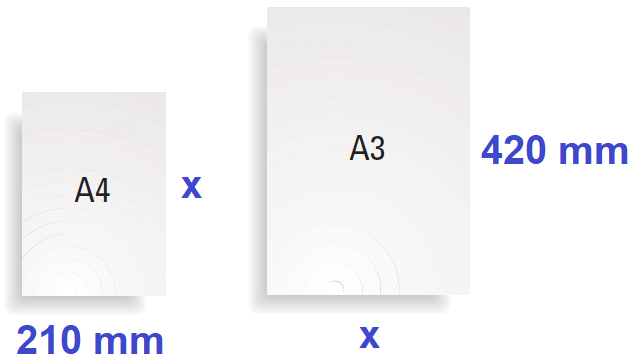
Solution :
Using the given information, write proportion.
210/x = x/420
Using cross product property,
x2 = 210 ⋅ 420
Take radical on both sides.
√x2 = √(210 ⋅ 420)
Simplify.
x = √(210 ⋅ 210 ⋅ 2)
x = 210√2
The geometric mean of 210 and 420 is 210√2, or about 297.
Hence, the distance labeled x in the diagram is about 297 mm.
Using Proportions in Real Life
Example 5 :
A scale model of the Titanic is 107.5 inches long and 11.25 inches wide. The Titanic itself was 882.75 feet long. How wide was it?
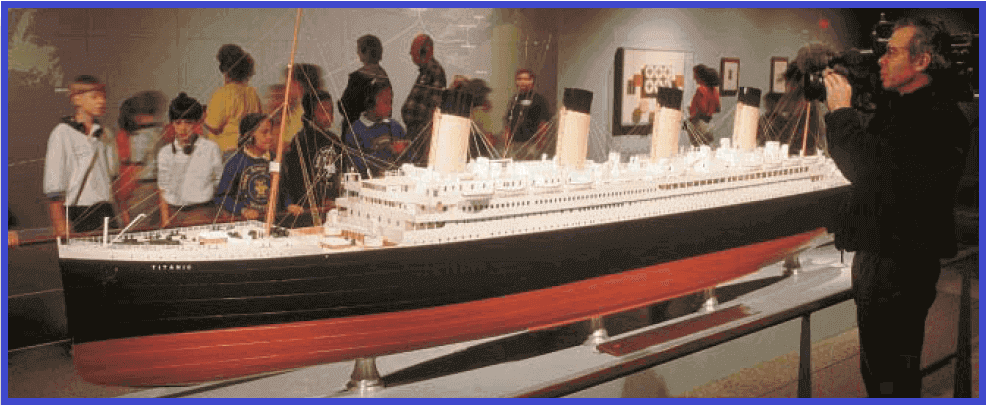
Solution :
One way to solve this problem is to set up a proportion that compares the measurements of the Titanic to the measurements of the scale model.
Problem Solving Strategy :
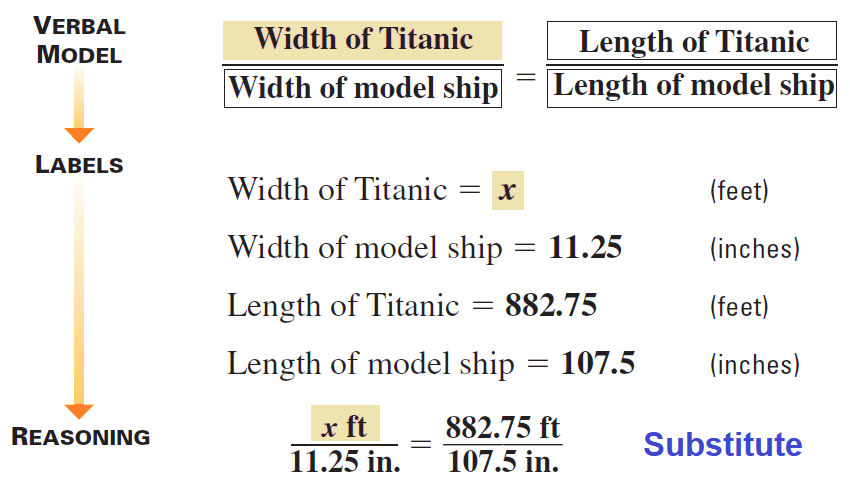
Multiply each side by 11.25.
11.25 ⋅ (x/11.25) = (882.75/107.5) ⋅ 11.25
Simplify.
x = (882.75 ⋅ 11.25) / 107.5
Using calculator, we have
x ≈ 92.4
Hence, the Titanic was about 92.4 feet wide.
Kindly mail your feedback to v4formath@gmail.com
We always appreciate your feedback.
©All rights reserved. onlinemath4all.com
Recent Articles
-
Digital SAT Math Problems and Solutions (Part - 134)
Apr 02, 25 12:40 AM
Digital SAT Math Problems and Solutions (Part - 134) -
SAT Math Resources (Videos, Concepts, Worksheets and More)
Apr 02, 25 12:35 AM
SAT Math Resources (Videos, Concepts, Worksheets and More) -
Digital SAT Math Problems and Solutions (Part 135)
Apr 02, 25 12:32 AM
Digital SAT Math Problems and Solutions (Part 135)
